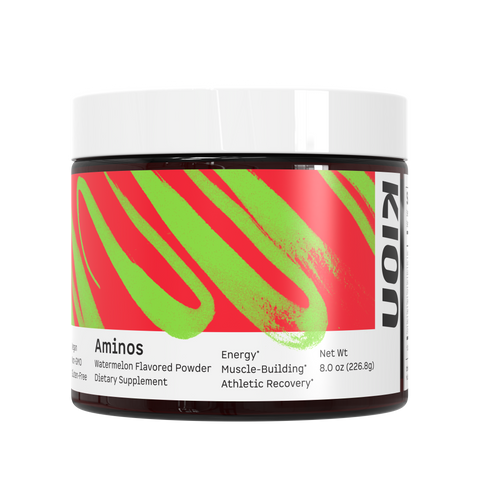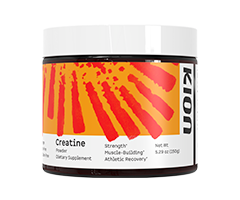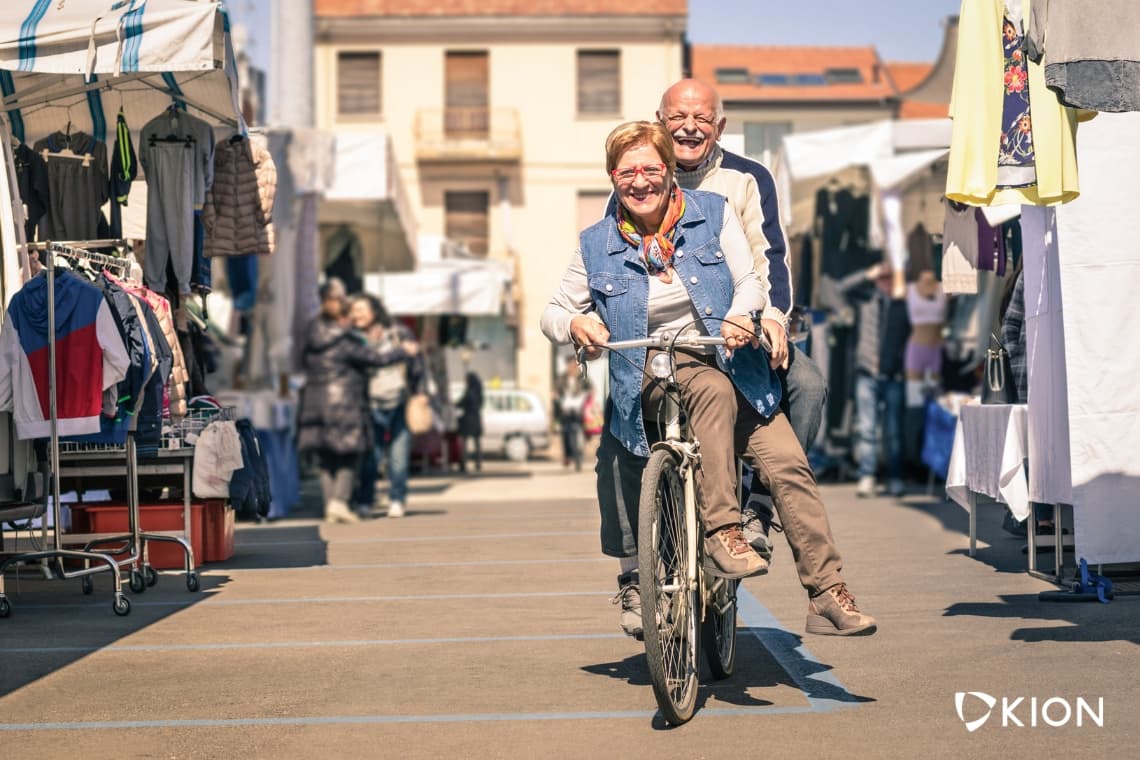You know what’s fascinating? The science of how to live longer, also referred to as longevity.
It’s been suggested in some circles that humans could live up to 120-140 years old. Many anti-aging enthusiasts like Peter Diamandis, Elon Musk and Dave Asprey are shooting for the moon, attempting to reach 160 years old.
But the sad truth is, the estimated average lifespan in the U.S. today is only about 78 years. Lifespan rates have been declining over the last several years due to high rates of chronic diseases, many of which are preventable with simple lifestyle changes.
In this article, we'll cover a few incredibly simple but effective strategies that are common threads among the longest-lived populations in the world, some of which may surprise you.
How Does Aging Work?
Biologically speaking, aging can be described as an accumulation of damage and mutations in DNA repair processes, breakages in the molecular machinery of cells, and a build-up of metabolic waste products that your body cannot break down. As time goes on, the body becomes less able to cope.
Over time, aging affects every cell in every organ, structure, and tissue in the body. For example...
- After 25 years old, maximum lung capacity begins to diminish.
- At 30 years old, human growth hormone begins its regression and falls at a rate of 14 percent per decade.
- After 30, muscle mass declines more than 20 percent in the absence of regular exercise.
- Male bone density starts to diminish around age 35, and that of women peaks right around 30.
- Between 30 and 40, two-thirds of humans undergo a gradual decline in the rate that the kidneys filter blood, leading to a number of urinary complications.
- Around 40 years, the heart muscles thicken and blood vessels stiffen, making it harder for the heart to pump blood, which can lead to hypertension and other cardiovascular problems.
- Constipation becomes more frequent in older adults, due to loss of proper digestive function.
Morbid, eh?
But the truth is, aging is a natural process that perpetuates the cycle of life and death. There's nothing wrong with aging, but there's also nothing wrong with wanting to slow down the clock a little bit, preserve your youth, and even live longer. So how can you do it?
Live Longer With Secrets From The Blue Zones
Even though aging is natural, its accelerated by things like a poor diet, chronic inflammation, smoking, chronic stress, improper physical activity (too little or too much), toxin exposure, sleep deprivation and more. The Western lifestyle often includes all of the above. Unfortunately, your body can only handle sub-optimal conditions for so long until disease sets in and quality of life declines.
But this modern accepted state of aging - where the brain degrades, physical fitness drastically declines, and disease is inevitable - is hardly seen in the Blue Zones. The Blue Zones are five geographic areas identified as having the largest populations of centenarians, or those that live to be over 100 years, on earth.
The Blue Zones were made popular by Dan Buettner who traveled all over the world to identify the characteristic environments and lifestyles that different populations with the highest longevity have cultivated over centuries. He outlined his findings in his book called The Blue Zones. Buettner’s Blue Zones refer to Sardinia (Italy), Okinawa (Japan), Loma Linda (California, USA), Nicoya Peninsula (Costa Rica), and Icaria (Greece).
A Glimpse Into A Blue Zone: Sardinia, Italy
During the mid-1990’s, an Italian doctor named Gianni Pes traced the history of 1,000 Sardinian centenarians. In one village of just 2,500 people, he found seven centenarians. This is an incredible amount when compared to America where there’s only about one centenarian per 5,000 people. Upon being interviewed, a number of these legends said that they’d spent their lives working hard as farmers or shepherds, following the seasons, raising families, and leading ordinary lives. On the surface, nothing really made them special. And the answer doesn’t lie in their genetics. So what it is that sets them apart from the rest of the world?
When you look at all these Blue Zones across the globe, there are five lifestyle factors that stand out the most. And these don’t just help them live longer, they live better. They have strong connections with their family and friends. They’re active. They wake up in the morning knowing that they have a purpose. And despite all of them being of different races, nationalities and religions, they enjoy fulfilled lives, with their feet planted firmly in the realm of ancestral living.
Don't worry, you don't have to move to another country to live longer. Here are five simple ways to enhance longevity that have been identified as common practices in the Blue Zone cultures.
5 Easy Ways to Live Longer
Longevity Tip #1: Don't Smoke
No surprises there. Even though 'don't smoke' is an obvious tip, you still don’t have to go far to find someone taking a puff of a cigarette. Whether or not smokers realize it, that cigarette is taking years - and quality years - off their lives.
Cigarette smoke, like air pollutants, industrial chemicals, and vegetable oils, is full of free radicals. Free radicals are any molecular species capable of existing independently and contain an unpaired electron. The unpaired electron is what makes free radicals so damaging, because electrons like to be in pairs. Therefore, free radicals scavenge the body to seek out other electrons so they can become a pair, causing damage to cells, proteins and DNA. In small amounts, the body can typically deal with free radical production. However, when consumed in excess, you're on a fast track to aging quicker and shortening lifespan.
Radicals of particular concern are reactive oxygen species, or ROS. These can lead to oxidative damage in both DNA and RNA, specifically in the mitochondria, where cellular energy is produced. As you get older, free radical reactions can cause aging in different parts of the body by increasing the rate of shortening of your DNA’s telomeres, the end caps that keep your DNA from 'unraveling'.
The elephant in the room is, of course, some individuals in the Blue Zones do smoke cigarettes. However, a study in Science Direct observed the smokers in these populations, and found the following:
"... smoking is extremely rare, and even when it occurs among them, it is correlated almost exclusively to bad health conditions and non-autosufficiency, indicating that it compromises health status and the quality of life even in extremely long living subjects."
While there are measures you can take to counteract free radical effects of smoking (such as strength training), it's like rolling a stone uphill. It's easier to just put down the cigarette. If you already don't smoke, congratulations! This one is easy for you.
Longevity Tip #2: Consume Legumes
Legumes are the fruits or seeds of a family of plants called Fabaceae. These slow-burning carbohydrates are a rich source of fiber and B vitamins, and seem to be a prevailing theme in the diets of many of the world’s longest-lived people.
For example, fava beans are a main staple in the traditional Sardinian diet. Which is ironic, because in many health/nutrition circles today, it’s almost taboo to eat legumes because of claims that they damage the gut and are difficult to digest. This is partially true, as some legumes are coated in saponins, which are soap-like compounds designed to protect the seeds as they pass through the digestive tract so they can emerge intact, ready to be planted.
Eating large amounts of saponins can certainly do a number on your stomach and intestines; however, they still have beneficial health effects. It's been suggested that the saponins that occur naturally in the cells of legumes affect the immune system in a way that helps to protect the body against cancer, as well as lower cholesterol levels. Saponins also lower the blood glucose response, and may even help to reduce the incidence of kidney stones. All this means that perhaps even the more deleterious parts of legumes could be beneficial in small amounts.
However, we'd still suggest properly preparing legumes before eating, especially if you have a history of gut discomfort or disorders. Traditional cultures have always taken steps to render grains and legumes more digestible, including fermenting, soaking, and sprouting. These processes make the plant anti-nutrients like saponins and phytic acid less harmful to the digestive tract. When legumes are properly prepared, they can actually contribute to your overall health and youthfulness in a number of ways.
First of all, legumes are low-glycemic foods (<70 on the glycemic index), which means that as they’re digested, they don’t cause a major spike in blood glucose levels. According to one study, the mean peak rise in blood glucose concentration after consumption of legumes was 23% lower than that caused by other foods like breads, spaghetti, rice, and cereals. When your blood sugar spikes too high, your body starts producing large amounts of insulin to get it out of your blood and into your cells. High insulin levels are associated with serious health conditions like obesity, sleep problems, and hypertension.
Additionally, legumes contain the highest total amount of dietary fiber of seventy high consumption foods tested by the USDA. Fibers that are either slowly fermented or not digestible at all help to promote healthy digestive activity, as well as prevent diverticulitis (inflammation in the digestive tract, particularly the intestines). Foods that are rich in fiber are also processed more slowly, which helps to control appetite and promote satiety, reducing the propensity to overeat.
So to live longer, you might want to take a hint from the centenarians and consider implementing (soaked, sprouted, fermented) legumes such as quinoa, beans, peas, and lentils into a healthy diet.
Longevity Tip #3: Constant, Low-Level Movement
In today's modern world, there's an obsession with going to the gym to crush it for an hour, either at the crack of dawn or immediately after leaving the office. But for the rest of our waking hours, we're succumbed to hunching over a computer, sitting in our cars, and laying on the couch. Even though it’s not the only factor, a sedentary lifestyle, which has become all too common today, can lead to weight gain and obesity and take quality years off our lives - even when paired with a killer gym sesh every day.
In stark contrast, people who live in the world’s Blue Zones aren’t hitting the Crossfit Box for an hour a day. They are simply engaging in low-level movement - gardening, hunting, gathering, shepherding - all day long. People like Mark Sisson, the man behind Mark’s Daily Apple, follow this type of lifestyle, making sure to get in lots of low-intensity activity throughout the day to keep their muscles primed, firing, and youthful.
Chris Kresser also writes about this concept. Man’s paleolithic ancestors had to exert themselves all day long to find food and survive. Instead of spending 30 minutes to an hour on the treadmill and then spending the rest of their day sitting inside the cave doing nothing, early man would have had to wander outside for hours on end, crawling over logs and boulders, making their way through the trees, and traversing miles of open terrain to get enough to eat. And whereas chronic cardio exercise sessions can cause inflammation, poor immune function, and oxidative damage (which, as you just learned, leads to aging), ancestral, low-level movement all day long has the opposite effect.
There are ways you can hack your own environment to simulate that lifestyle, even if you’re just typing up emails or making calls:
- Do your computer work at a standing (or better yet, treadmill) workstation
- Take phone calls outside for a walk, or opt for 'walking meetings' with coworkers
- Take breaks throughout the day for mini exercise sessions like burpees, kettlebell swings, or pull-ups
The options are endless. Just keep yourself in a state of mild, physical activity for a large portion of your day in a way that makes your formal workouts at the gym 'an option'.
Longevity Tip #4: Eat a Plant-Based Diet
Research shows that solely plant-based diets (e.g. vegan and vegetarian) are not necessarily the ultimate diets for living longer. But it’s evidently clear that the inclusion of large amounts of plant matter into your daily meal plan lends itself to longevity. And this goes far beyond just eating legumes.
Plant-based diets are so effective because of the nutrients and micronutrients that plants contain: n-3 fatty acids, antioxidant vitamins, minerals, phytochemicals, fiber, and plant proteins, just to name a few. In particular, the phytochemicals derived from fruits and vegetables are potent antioxidants and cancer-preventing compounds, due to their synergistic effects. No single antioxidant can replace the array of phytochemicals found in the large variety of edible plants available to humans.
Wild plants are especially beneficial and have even higher levels of phytonutrients. However, they can be hard to find in a modern-day grocery store. Luckily, there's an app for that! Phone apps like FlowerChecker and PlantSnap allow you to photograph different plants, identify them, find out if they're edible, and any medicinal qualities they might have.
If you’re in a more urban setting, you can look around for a community garden or grab a field guide, and keep an eye out for things like dandelion or plantain that could be growing nearby. If you have the luxury of enough room to grow a garden, that's another great way to grow wild plants and reap all the longevity benefits of being outdoors, in touch with nature.
In other words, to get the full plant-foraging experience of centenarians in the Blue Zones, forget the produce aisle. Wander around outside for a couple hours, and you’ll discover all sorts of tasty treats, and get in some low-level, caveman-style exercise. Now that's a recipe for living longer.
Longevity Tip #5: Social Connection and Strong Relationships
Social connection is one of the most valued traits of Blue Zone populations. In places like Okinawa and Sardinia, family always comes first. One generation starts a family, and as the initial progenitors get older, their children, and then their grandchildren, and perhaps even their great-grandchildren, will begin to look after them (although in the Blue Zones people are usually active well into their 90’s). For them, a family is an investment in the future. How would most of our modern family relationships compare to a community like that?
In terms of how they help us live longer, social relationships can impact mental and physical health, health behavior, and even mortality risk, both in the short- and long-term. They can even boost the immune system, since genes that are impacted by social connection also code for immune function and inflammation.
On the flip side, one study observed that relationship conflict and poor social support can modulate pro-inflammatory cytokine secretion (part of the natural immune response). Unhealthy social relationships, or even no relationships at all, can thereby promote depression, emotional stress responses, and detrimental health behaviors. These effects begin as early as adolescence and are cumulative over time.
In today's world, we're fighting an uphill battle against social connection and strong relationships. Family problems are almost assumed. The establishment of 'social media' has made social isolation that much easier and more prevalent. People talk via text messages or DM's more than in person, face-to-face. Don't get us wrong, we aren't haters of technology. In fact, you're probably reading this article on your phone or computer right now. However, when 'likes' on a post start to replace face-to-face connection over a cup of coffee, our well-being suffers.
Despite the obstacles, healthy social and family relationships are absolutely critical to living a longer, healthier, more joyful and fulfilling life. A recent meta-analysis of 148 studies showed a “50% increased likelihood of survival for participants with stronger social relationships, regardless of age, sex, initial health status, and even cause of death.” That's some incredibly strong evidence in favor of hanging out with your friends and family.
So take your little sister or brother out for coffee. Call your dad on the phone once a week. Visit your grandma. Organize family dinners at your home. Go out for coffee with a friend. Swap stories. Absorb others' wisdom and experience. Just get connected, and your telomeres will thank you.
Summary (And A Quick Tip to Live Longer)
While the practices above are incredibly important to leading a long, healthy life, at Kion, we have plenty of resources on how to 'biohack' your way to a longer life. However, it's important to get the basics down first, and now you're equipped with five simple ways to live longer.
Still not sure where to start? Try this: Identify just one family member who you could probably do a better job at maintaining or building a relationship with. Call them up, text them, email them, send a carrier pigeon, do whatever you have to do to set a date for coffee or lunch or dinner. Start reestablishing a connection that may have diminished over the years. Build that love, build that relationship, and interact on a deep and meaningful level. Not only will your lifespan increase, you’ll have at least one person that you want to live that long for.











